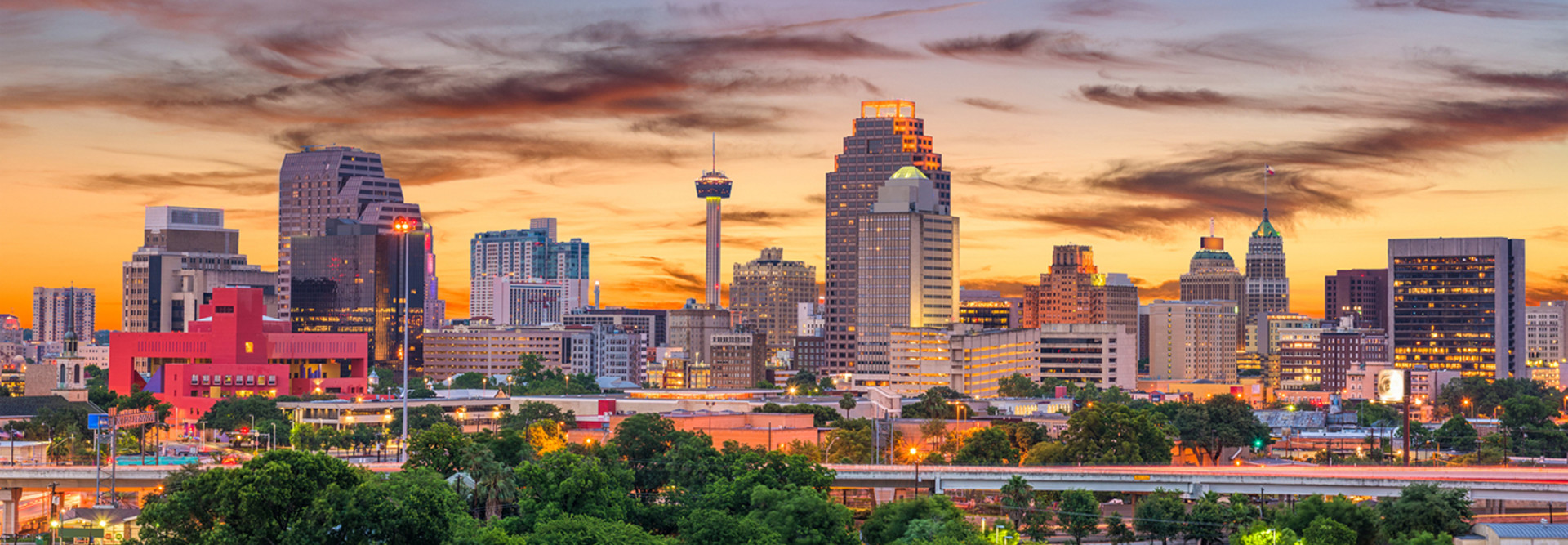How Innovation Zones Serve as Test Beds for Smart City Tech
San Antonio may not have the size and clout of its fellow Texas cities Dallas and Houston, but it is still the 24th-largest metropolitan area in the country. And when it comes to civic technology deployments, it is making moves.
In June, the San Antonio City Council was briefed on plans to create three “innovation zones,” as part of its Smart SA initiative, the San Antonio Express-News reports. Although the city has not formally moved forward on the innovation zone deployments, the proposed zones indicate that Alamo City is getting more serious about ramping up its smart city efforts.
Innovation zones are areas within cities that municipalities use as proving grounds for smart city technology deployments, small areas to test everything from smart streetlights to IP-connected surveillance cameras and environmental sensors. Once the technologies are proven at a small scale, cities can then make a case to expand them on a wider basis. Other cities, including Denver, Las Vegas and Kansas City, Mo., have undertaken similar efforts in recent years.
“We see the innovation zones as a real-world proving ground for the pilot smart city technology that we’re testing,” Jose De La Cruz, chief innovation officer of San Antonio, said at the council meeting, according to StateScoop. “The zones are really the next phase in our overall smart city strategy.”
SIGN UP: Get more news from the StateTech newsletter in your inbox every two weeks!
San Antonio Plans Innovation Zones as Part of Smart City Strategy
In April, the City Council’s Innovation and Technology Committee recommended placing innovation zones in two areas: South Texas Medical Center and Brooks, a 1,308-acre mixed-use community in the city’s southeast quadrant. In June, De La Cruz added in downtown San Antonio as a third area.
The three areas were selected because the city hopes to use innovative technologies to address challenges in each. Additionally, De La Cruz said that the three areas were chosen because they have existing fiber-optic cables, which can serve as backhaul to the internet for wireless and Internet of Things technologies, according to the Express-News.
Brooks is a former U.S. Air Force base slated for “live-work-play” development, according to the Rivard Report, and the city listed public Wi-Fi, innovative drainage systems, logistics and public transportation as opportunities that technology could address.
Meanwhile, according to the Rivard Report, the medical center “would serve as a laboratory for new transportation projects aimed at combating traffic congestion, parking issues, and pedestrian accidents, among others.”
De La Cruz said that the downtown area will test innovative lighting solutions and IoT solutions to parking accessibility and enforcement.
What comes next? The Express-News reports:
As the innovation zones ramp up, the city will hold a vendor summit where officials will lay out local challenges and invite companies to propose smart solutions. Eventually, the city will seek sealed proposals and then best-and-final offers from shortlisted groups over the course of the next several months.
Cities Promote Innovation Districts to Improve City Infrastructure
Other cities have adopted the innovation zone model.
In early 2017, Las Vegas pushed ahead with its own “innovation district” in the city’s urban core to concentrate smart city technology infrastructure investment.
“The Innovation District is meant to be the home of new transportation infrastructure and mobility technologies, allowing for the creation of partnerships with autonomous vehicle/mobility companies and with smart city technology firms,” the city says on its website.
Las Vegas has partnered with Cisco Systems to get access to its analytics tools to collect data about traffic movement, water use, pedestrian activity, waste, lighting and other environmental factors, according to a press release.
Since November 2017, Las Vegas has operated an all-electric minibus, billed as the first autonomous public transportation to be launched on U.S. roads, thanks to the collaboration between the City of Las Vegas, the Regional Transportation Commission of Southern Nevada and the Keolis transportation management company. As of May, the shuttle has transported more than 25,000 riders, Christopher Barker, vice president of new mobility, communications and marketing at Keolis tells the website Skift, a number he says is “ahead of what we forecasted.”
In Denver, about a 20-minute light-rail trip northeast from downtown and sitting on the edge of Denver International Airport, the city is developing a mixed-used area known as Peña Station Next, with hotels, commercial and residential development.
The city envisions that the area will include 1.5 million square feet of office space, 500,000 square feet of retail space and 2,500 residences, while also serving as a test bed for smart city technology. One of the development’s buildings has been completed: the gleaming, solar-powered, 112,500-square-foot edifice that houses Panasonic Enterprise Solutions’ operations and technology center.
In the streets, workers are installing wirelessly controlled LED streetlights, which the complex’s backers say in a press release will deliver 70 percent energy savings over conventional lampposts.
And in Kansas City, the city is moving forward with its Smart City Initiative, and also plans to expand its KC Streetcar, a 2-year-old transit system that wends its way through parts of downtown Kansas City.
The KC Streetcar has served as “a laboratory” of sorts deploying smart city, Kansas City CIO Bob Bennett told StateTech in a previous interview. The city has partnered with Cisco as a strategic partner on the project.
And as StateTech reported:
Kansas City’s Smart City corridor is a $15.7 million public-private partnership offering free public Wi-Fi, smart streetlights and sensors along the KC Streetcar’s 2-mile-long route. The city embedded technology supporting these capabilities along the streetcar route, often mounting cameras, sensors and Wi-Fi hubs on lampposts and elsewhere.









